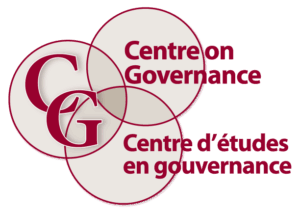
November 7, 2025 (Eastern Time)
About the Event:
Canada has spent decades discussing how to understand and best manage investments in science, research and innovation to create positive impacts for Canadians. In this session Canadians with lived program experience will talk about how they have gone about framing, measuring, evaluating and reporting on science, research and innovation in their own contexts. We will hear from Natural Science and Engineering Council (NSERC) and Agriculture and Agri-Food Canada (AAFC) program managers – among others related to health, environment and industrial development– as well as those with international connections to focus on actual case examples of what has worked in terms of managing for results and telling a credible and useful performance story to funders, managers and policy makers.
Session Goals:
- Share information and insights on what has worked in terms of framing, measuring and evaluating science, research and innovation support investments in Canada
- Gauge interest in evolving a community of interest and practice in this area – similar to that done previously via PPX and others.
Who Should Attend:
Anyone with an interest in improving the understanding and management of investments in science, research and innovation policies and programs.
Timing and Registration
The timing for this online session is scheduled for November 7th, 2025 from 12:00 – 1:30 pm EST. Registration is free of charge.
Organised by:
Centre on Governance and Performance and Planning Exchange (PPX)

Bridging RBM and Nonprofit Realities: Aligning Performance with Purpose
Public Lecture
Oct 1, 2025 — 12 p.m. to 1:30 p.m.
Join us for an insightful session with Louise Adongo as she explores how Results-Based Management (RBM) can be adapted to reflect the lived realities of nonprofit organizations.
About the Event:
Come explore how nonprofits can align performance with purpose atBridging RBM and Nonprofit Realities: Aligning Performance with Purpose
In this engaging session, Louise Adongo will unpack how Results-Based Management (RBM) can be adapted to fit the real-world contexts of nonprofits. She will explore how organizations of all sizes can measure results in ways that are practical, fair, and meaningful approaches that highlight progress, strengthen learning, and go beyond paperwork.
Through Canadian examples and hands-on insights, this presentation will show how nonprofits can mix numbers with stories to capture community impact, build trust, and support shared decision-making. Participants will leave with practical tools and fresh perspectives on aligning performance measurement with mission and values.
This event offers a valuable opportunity to reflect on performance, equity, and long-term positive change in nonprofit work.

Louise Adongo
Consultant
Louise Adongo works with nonprofits, partner organizations, and public agencies to make planning and measuring results easier and more useful. She focuses on helping groups design simple, fair systems that show real progress and support learning. Her approach is grounded in relationships, shared decision-making, and leadership that values both people and results. She believes in building trust, sharing power, and creating change that lasts for future generations.
The integration of environmental sustainability in all evaluations
PRESENTED BY: Andy Rowe, Debbie DeLancey, and François Dumaine
WHEN: January 23, 2025 at 12 pm ET
WHERE: CES webinars take place online using Zoom
REGISTRATION: Please go here to register: https://us02web.zoom.us/webinar/register/WN_f8FvysXCTYGJyvRR5BuQ4A
COST: Free for CES and non-CES members
LANGUAGES: The webinar will be delivered in English
Webinar Focus
This webinar will provide participants with an opportunity to explore and advance the position that all evaluations ought to include environmental sustainability considerations. Topics to be covered include the rationale for such a conception of program evaluation, the identification of current challenges and barriers that must be overcome, and the range of tools and resources currently available to allow evaluators to embrace this vision of program evaluation. Ultimately, the webinar is a call to action to strengthen the contribution of program evaluation in managing services, programs and activities in a manner that is consistent with the interests of both the human and natural systems.
Biography of Presenters
Andy Rowe
A former president of the Canadian Evaluation Society, Andy has over forty years in evaluation and was an early contributor to mainstreaming environment in evaluation; initiated the Canadian Evaluation Society effort to mainstream environmental sustainability and was a member of the inaugural Evaluation Reference Group of the Adaptation Fund. His Rapid Impact Evaluation method is a use-seeking method to incorporate environment into evaluation. A founding member of Footprint Evaluation created to develop tools and practices to integrate environmental sustainability into all evaluation, Andy has contributed to important tools and practices for sustainability-inclusive evaluation, developing capacities and advising sustainability-inclusive evaluations and promoting the necessity of including environment in evaluation. Andy has a PhD from the London School of Economics, is a Fellow of the Canadian Evaluation Society and was recognized by the Society for his contributions to evaluation.
Debbie DeLancey
Debbie DeLancey is a long-term northerner with many years experience working with NWT communities, Indigenous organizations and governments, and the Government of the Northwest Territories (GNWT). Her evaluation work includes leading the establishment of the evaluation function within the GNWT, commissioning and leading evaluations in several government departments, and supporting the development and implementation of evaluation projects with Indigenous communities and non-government organizations, with a special focus on land-based programming in the north. Her work is grounded in principles of social justice and Indigenous rights. Debbie was Co-Chair of the 2018 CES Annual Conference in Calgary, which included an additional two-day session in the NWT co-sponsored with an Indigenous government. She is a CE and a Fellow of the CES.
François Dumaine
François Dumaine is a Partner at PRA Inc. As an evaluation practitioner, he has had a wide range of opportunities to bridge theory and practice, and to explore new ways of ensuring that information needs of decision-makers are efficiently met. He has collaborated with federal departments, non-profit organizations and local governments in assessing their respective programs and activities. In undertaking his work, François is guided by principles related to
social justice, environmental sustainability, and Canada’s commitment to reconciliation. François is a CE and a Fellow of CES, and he served as President of CES and as Chair of the CES Educational Fund.
Learning Objectives
In addition, this webinar aims to strengthen capacities in line with the following Competencies
for Canadian Evaluation Practice (referenced here):
- Knows evaluation theories, models, methods and tools and stays informed about new thinking and best practices.
- Considers the well-being of human and natural systems in evaluation practice.
- Develops evaluation designs.
- Examines and responds to the multiple human and natural contexts within which the program is embedded.




